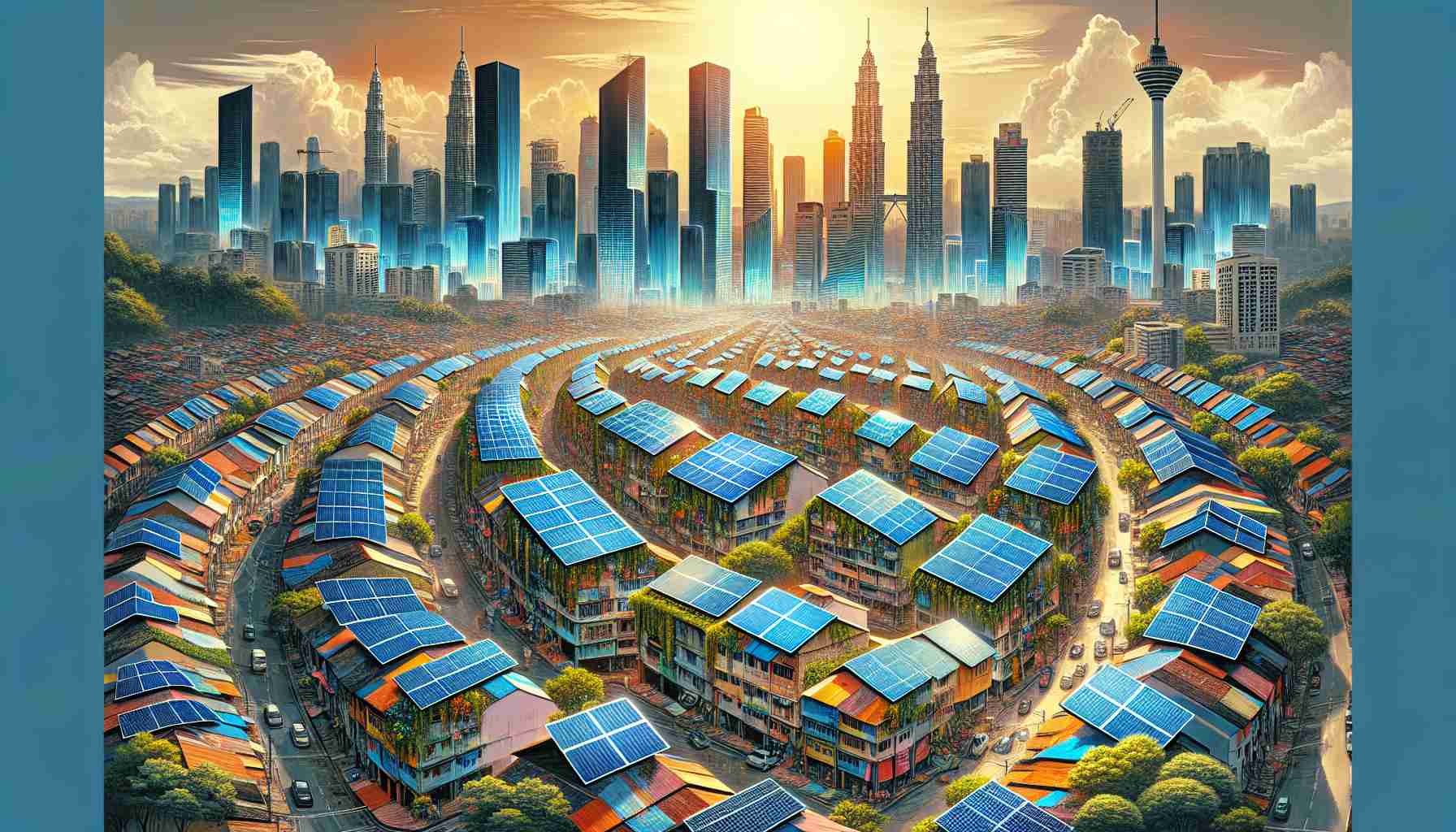
Panasonic’s Revolutionary Solar Initiative
Panasonic is making significant strides in sustainability with a newly installed solar power system at its air conditioning manufacturing plant in Malaysia. This impressive 5.2MW solar generation system will meet about 20% of the factory’s overall electricity needs.
This solar project stands out as one of the most extensive installations within the Panasonic Group. Featuring 9,461 solar panels capping the spacious 31,786 m² factory, the system is anticipated to produce around 5,900 MWh of clean energy annually. This initiative is poised to lead to significant reductions in carbon emissions, estimated at about 3,912 tons each year.
The Malaysian factory specializes in manufacturing a variety of products, including room and commercial air conditioners, A2W heat pump hot water heaters, and compressors. This move not only showcases Panasonic’s commitment to innovative energy solutions but also aligns with its broader environmental goals.
With an ambitious vision, the Panasonic Group aims to achieve net zero CO2 emissions across all its facilities by the year 2030. This important step in Malaysia reflects the company’s dedication to sustainability and reducing its environmental impact, paving the way for a cleaner future.
Panasonic Leading the Charge in Solar Energy: What You Need to Know
Panasonic’s Solar Initiative: Key Features and Innovations
Panasonic’s recent installation of a 5.2 MW solar power system at its air conditioning manufacturing plant in Malaysia marks a significant milestone in corporate sustainability efforts. This project, featuring an impressive array of 9,461 solar panels across 31,786 m², is not only a notable development for Panasonic but also an essential step towards cleaner energy solutions. Here’s a deeper look into the system’s specifications, benefits, and future implications.
Specifications of the Solar Power System
– Total Capacity: 5.2 MW
– Number of Solar Panels: 9,461
– Annual Energy Production: Approximately 5,900 MWh
– Estimated Carbon Emission Reduction: About 3,912 tons each year
How This Solar Initiative Works
1. Solar Energy Utilization: The solar panels harness sunlight, converting it into electricity that powers the manufacturing facility.
2. Reduction in Dependency on Fossil Fuels: By generating 20% of its energy from renewable sources, the factory decreases reliance on non-renewable energy.
3. Integration with Manufacturing Operations: The energy produced is directly used in the manufacturing processes, improving efficiency and sustainability.
Pros and Cons of Panasonic’s Solar Strategy
Pros
– Environmental Impact: Significant reduction in carbon emissions contributes to climate change mitigation.
– Cost Savings: Long-term reduction in energy costs, as solar energy can lower electricity bills.
– Corporate Responsibility: Enhances Panasonic’s reputation as a leader in sustainability.
Cons
– Initial Investment: High upfront costs associated with solar panel installation and infrastructure.
– Weather Dependence: Energy production can be affected by weather conditions, potentially leading to fluctuations in energy supply.
Market Analysis and Future Predictions
The trend towards renewable energy, propelled by corporate initiatives like Panasonic’s, is expected to continue growing. Experts project that companies will invest more in solar solutions as they seek to meet sustainability targets and regulatory requirements. By 2030, the global solar market could reach unprecedented levels, with innovations in technology improving efficiency and cost-effectiveness.
Use Cases and Broader Implications
Panasonic’s solar initiative is part of a larger movement among manufacturers to incorporate renewable energy solutions. Following this model, other companies in various sectors, from automotive to electronics, can implement similar practices to reduce their environmental footprint. The implications extend beyond mere energy savings — they play a crucial role in driving innovation and sustainability within industries.
Commitment to Sustainability
Panasonic’s goal to achieve net zero CO2 emissions by 2030 highlights a growing corporate commitment to environmental responsibility. As companies increasingly recognize the importance of sustainability, initiatives like these will likely become standard practice, influencing market dynamics and consumer expectations.
For more insights on Panasonic’s innovative approaches, visit Panasonic.



